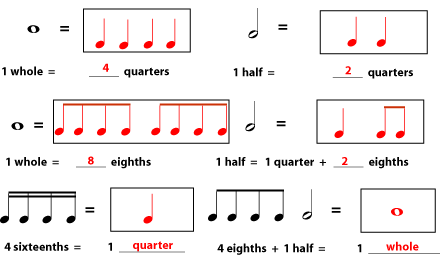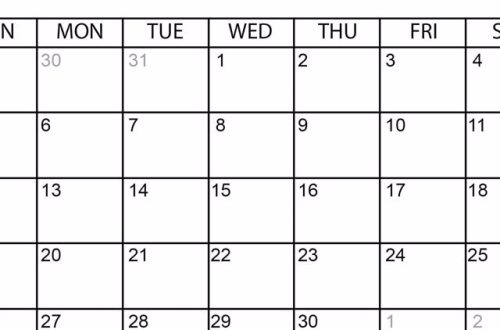
Piano keys and the arrangement of notes on them
In total, there are 88 keys on the piano keyboard, among which 52 are white, the remaining 36 are black. The white keys are arranged all in a row without any special features, and the black keys are arranged in groups of two or three. Look at the picture:

On the white keys, seven of the same notes are regularly repeated: DO RE MI FA SOL LA SI. Each such repetition from one C note to the next C note is called an OCTAVE. Any DO note is in front of a group of two black keys, that is, to the left of them, as if “under a hill”. Next to the DO key on the piano is the PE key, and so on, all the piano keys are arranged in order. Let’s look at the picture:

So here’s what we found out:
- The note DO is always to the left of the two black keys.
- The note PE is located on the piano between two black keys.
- The MI note occupies a position to the right of a group of two black keys.
- The note F is to the left of the group of three black keys.
- The notes G and A are inside a group of three black keys.
- The SI note is adjacent to the DO note and is located to the right of the group of three black keys.
What are the octaves on the piano?
We have already said above that each repetition of a set of all seven sounds is called an octave. The octave system can be compared to a multi-storey building. The same steps of the musical ladder (DO RE MI FA SOL LA SI) are repeated each time at a new height, as if the floor of the ladder is gradually rising.
Octaves have their own names, they are very simple. Medium and high sounds are in octaves, which are called: FIRST, SECOND, THIRD, FOURTH and FIFTH. The first octave is usually in the middle of the instrument, in the middle of the range. The second, third, fourth octaves are higher, that is, on the right side in relation to the first octave. The fifth octave is considered incomplete, since there is only one sound in it – only one note DO without continuation.

They say about notes that are in different octaves: up to the first octave, up to the second octave, up to the third octave, etc., salt of the first octave, salt of the third octave, salt of the fourth octave, etc.
Low, bass sounds occupy the left side of the piano keyboard. They are arranged in octaves, which are called: SMALL, BIG, CONTROCTAVES, SUBCONTROCTAVES. The small octave is closest to the first, immediately to the left of it. Below, that is, to the left, on the piano – the keys of a large octave, then – the counteroctaves. The subcontroctave is incomplete, it has two white keys – la and si.

What are the black keys for?
We figured out a little with the white keys of the piano – they contain the main notes DO RE MI FA SOL LA and SI in different octaves. And what, then, are the black keys on the piano for? Is it just for guidance? It turns out not. The fact is that in music there are basic notes (steps), there are seven of them, and besides them there are derivative steps, which are obtained by raising or lowering the basic ones. An increase in step is indicated by the word SHARP, and a decrease is indicated by the word FLAT.
In musical notes, special signs are used to designate sharps and flats. A sharp in outline is a small lattice (just like a lattice as on your phone keyboard), which is placed in front of a note. The flat (from French – soft “be”) resembles a Russian soft sign, only more pointed towards the bottom or the Latin letter b, this sign, like the sharp, is placed in front of the note (in advance).

IMPORTANT! Sharp and flat raises or lowers, that is, changes the note by a SEMITOONE. Semitone – is it a lot or a little? A semitone on a piano keyboard is the smallest distance between two keys. That is, if you play all the keys of the piano in a row, without skipping white and black, then there will be a semitone distance between two adjacent keys.
And if we need to play some kind of sharp, then we simply take a key a semitone higher, that is, not the usual white DO, RE or MI, but the black one following it (or white, in the case when there is no black nearby). Let’s see some examples:

It so happened that two notes – mi-sharp and c-sharp coincide with other keys. MI SHARP is the same as the FA key, and C SHARP is the same as the C key. For these sharps, there were no separate black keys, so the neighboring white keys “rescued” them. There is nothing to be surprised at, in music this often happens. This interesting property, when sounds sound exactly the same, but are called differently, has the name ENHARMONISM (ENHARMONIC EQUALITY).
If we need to take some flat on the piano, then on the contrary, we need to play a key a semitone lower, that is, to the left, the key that comes before the main one. And here, too, there will be cases of enharmonic equality: F-FLAT coincides with the MI key, and C-FLAT with the SI key. Let’s see now all the other flats:

Thus, the black keys on a piano keyboard perform a very interesting double function: for some notes they are sharps, and for others they are flats. If you have learned today’s lesson well, then you can easily name these key matches. If you are working with a child, then be sure to ask him about it so that this thought in his head is better deposited. By the way, if you are going to learn how to write music with your child, then we have a good guide to help you – How to learn music with a child? Welcome to this page!
Dear friends! Did this article help you in any way? What questions do you have left unresolved? What else would you like to know from us about the world of music? Write your thoughts and wishes in the comments. None of your messages will go unnoticed.





